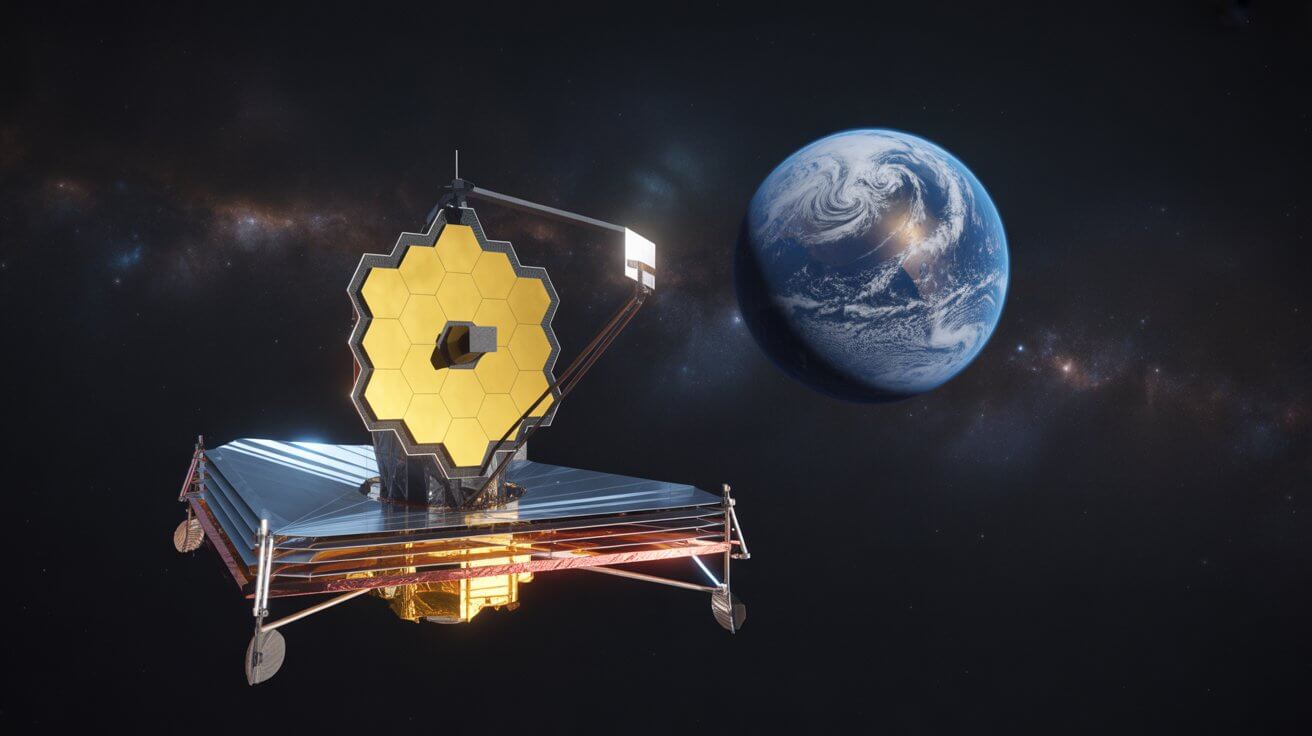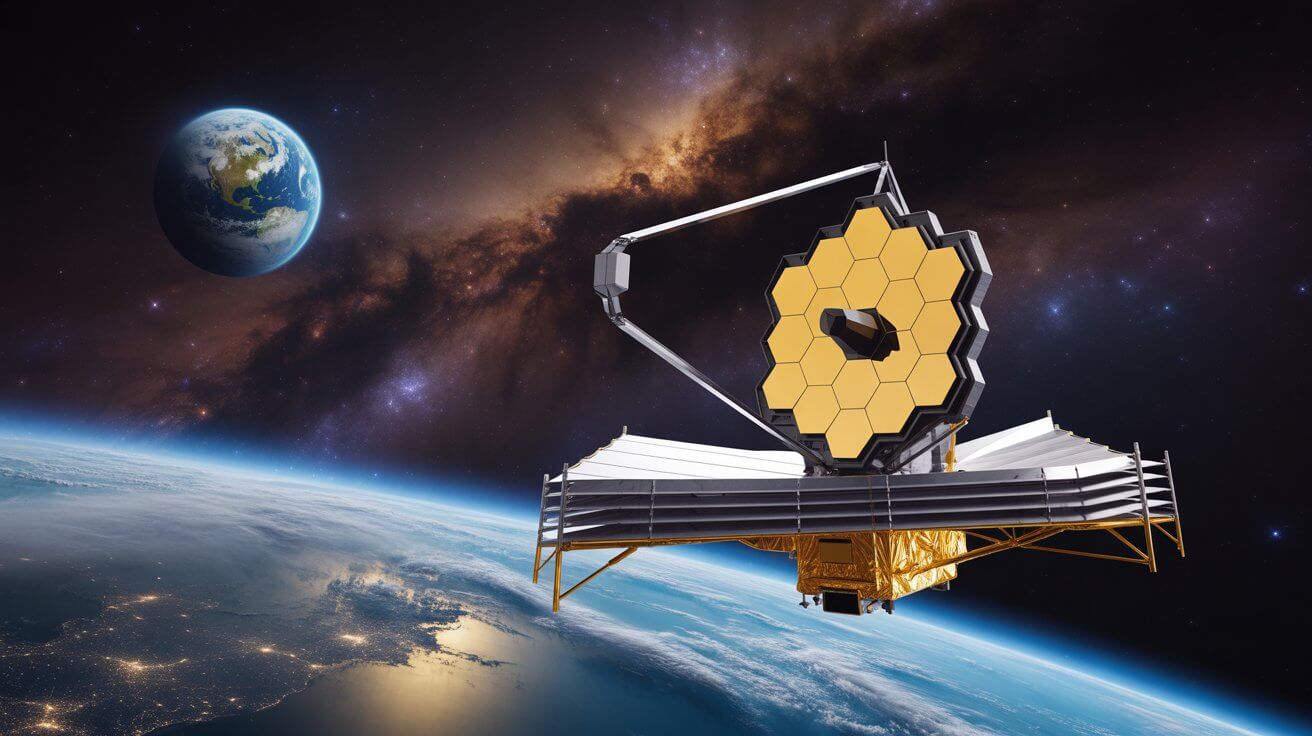Launched in December 2021, the James Webb Space Telescope (JWST) has been heralded as the most powerful astronomical observatory ever built. By 2025, it continues to provide unprecedented insights into the early universe, star formation, exoplanets, and the nature of cosmic phenomena. JWST’s capabilities far surpass its predecessor, the Hubble Space Telescope, allowing astronomers to peer deeper into space and further back in time than ever before.
1. A Brief Overview of JWST
The JWST is a collaboration between NASA, ESA, and the Canadian Space Agency. Equipped with a 6.5-meter primary mirror and highly sensitive instruments, it observes primarily in the infrared spectrum. This allows it to detect faint heat signatures from distant galaxies, young stars, and exoplanet atmospheres. Its L2 orbit, 1.5 million kilometers from Earth, ensures minimal interference from Earth’s heat and light.

2. Observing the Early Universe
One of JWST’s primary goals is to study the universe’s earliest galaxies. By detecting infrared light stretched from the cosmic expansion, JWST can reveal galaxies formed less than 400 million years after the Big Bang. These observations help scientists understand how galaxies evolved, how the first stars ignited, and the processes that shaped the large-scale structure of the cosmos.
3. Stellar and Planetary Formation
JWST has transformed our understanding of star and planet formation. Its infrared capabilities allow it to peer through dense cosmic dust clouds, uncovering the birthplaces of stars and planetary systems. By observing protostars and protoplanetary disks, astronomers can study the early stages of planet formation and gain insights into the diversity of planetary systems in the galaxy.
4. Exoplanet Atmospheres and Habitability
The telescope has revolutionized exoplanet science by allowing detailed study of their atmospheres. JWST’s spectroscopy can detect molecules such as water vapor, carbon dioxide, methane, and oxygen — key indicators for assessing habitability. Observations of hot Jupiters, super-Earths, and potentially habitable exoplanets provide critical data for understanding planetary environments and the possibility of life beyond Earth.

5. Investigating Cosmic Chemistry
JWST’s instruments allow astronomers to study the chemical composition of galaxies, nebulae, and interstellar clouds. Understanding the distribution of elements such as hydrogen, carbon, oxygen, and nitrogen helps reveal the processes driving cosmic evolution and star formation. Its ability to detect molecules in distant galaxies expands our knowledge of chemistry across the universe.
6. Dark Matter and Dark Energy Research
JWST contributes indirectly to dark matter and dark energy studies by mapping the distribution of galaxies over cosmic time. Gravitational lensing effects and galaxy clustering provide insights into the unseen matter that shapes the cosmos. These observations complement data from other missions, enhancing our understanding of the universe’s hidden forces.
7. Infrared Astronomy Breakthroughs
Infrared astronomy is crucial for observing phenomena that are otherwise invisible in visible light. JWST’s advanced detectors capture infrared signatures from cold objects, such as brown dwarfs, molecular clouds, and distant galaxies. This opens new windows into the lifecycle of stars, the formation of planetary systems, and the earliest epochs of cosmic history.
8. Collaboration and Data Sharing
JWST data is shared globally, enabling scientists from multiple disciplines to conduct research. International collaboration ensures diverse scientific perspectives, leading to groundbreaking discoveries in cosmology, exoplanet studies, and stellar physics. Open-access data also allows citizen scientists to participate in the discovery process.
9. Groundbreaking Discoveries by 2025
By 2025, JWST has made remarkable contributions:
- Identification of some of the earliest galaxies in the universe.
- Characterization of exoplanet atmospheres, including potential biosignatures.
- New insights into star formation in dense molecular clouds.
- Mapping the distribution of interstellar dust and cosmic chemistry.
10. Challenges and Future Prospects
Despite its success, JWST faces challenges including instrument calibration, data analysis complexity, and maintaining operations over its long mission lifespan. Future improvements in computational modeling, artificial intelligence, and data processing will enhance its capabilities. JWST sets the stage for next-generation observatories that may combine infrared, optical, and gravitational wave observations for a holistic understanding of the universe.
Conclusion
The James Webb Space Telescope has fundamentally transformed our view of the cosmos by revealing previously hidden aspects of the universe. In 2025, it continues to provide unprecedented clarity into the formation of galaxies, stars, and planetary systems. JWST is more than a telescope; it is a symbol of human curiosity and technological achievement, pushing the boundaries of exploration and understanding of the cosmos.

